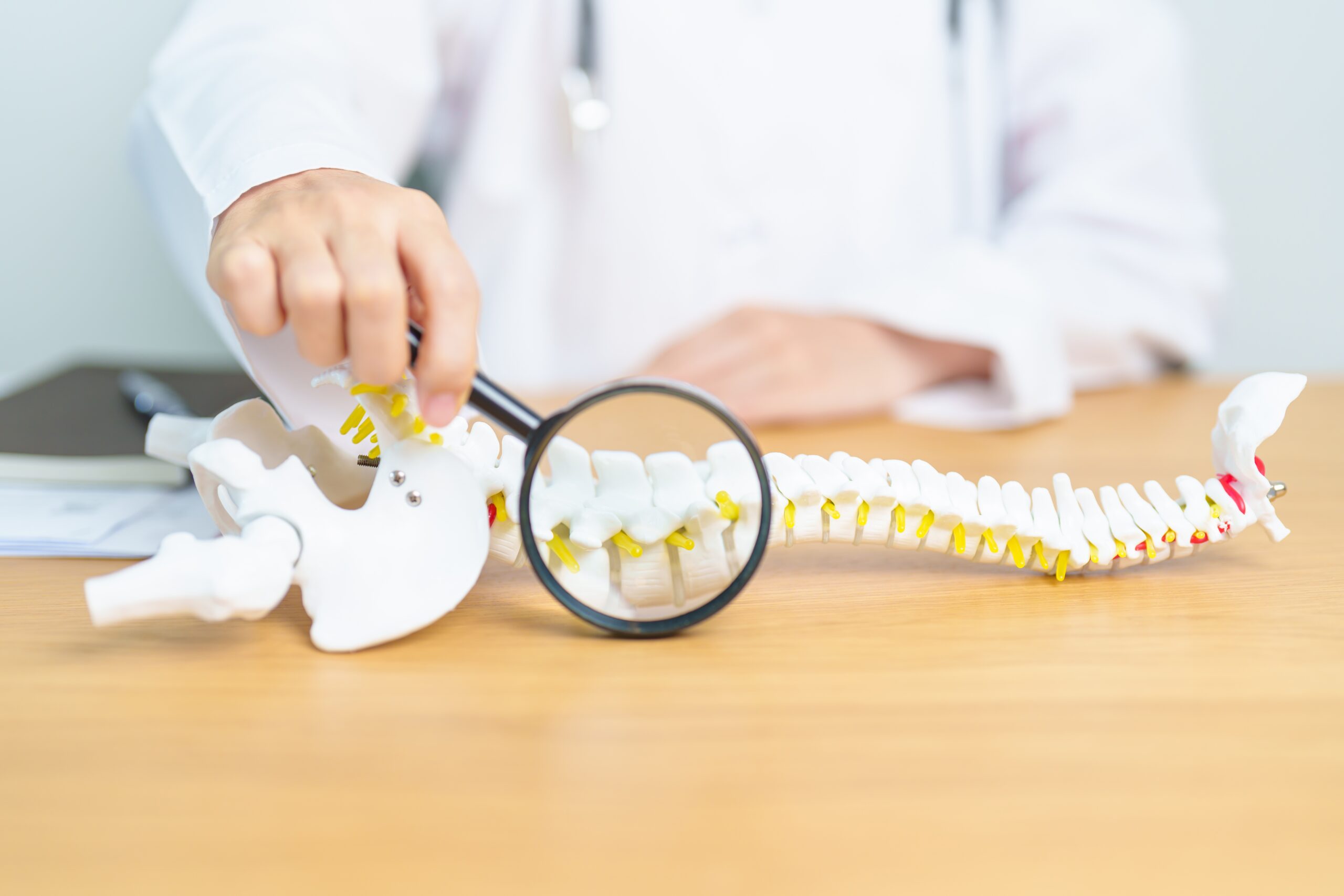Low back pain is one of the most common medical complaints among adults. Aging-related changes can affect your spine as early as your 30s or younger, according to the American Academy of Orthopaedic Surgeons. These changes may set the stage for low back pain later in life. If pain develops, your physician may turn to an imaging test called a lumbar spine MRI to pinpoint the cause.
Lumbar Spine MRI, Defined
Unlike X-rays and CT scans, MRI scans don’t use low-dose radiation to create images for radiologists to read. Instead, MRI scans form strong magnetic fields by sending electricity through wire coils. The coils send and receive radio waves that temporarily shift hydrogen atoms in your body. When the atoms return to their normal positions, they produce energy, which the machine detects and uses to form images on a computer.
MRI produces detailed images of soft tissue, organs, and muscles, and it’s especially adept at helping physicians distinguish between healthy and diseased tissue. MRI can detect extremely small or subtle changes in the spine, which makes it the physicians’ go-to imaging test for the bony column.
Your lumbar spine (the low back) includes the five vertebrae that sit just above the base of the spinal column. A lumbar spine MRI focuses on these vertebrae, numbered L1 to L5, and nearby parts of the low back, including:
- Coccyx (tailbone)
- Sacrum, the triangular bone connecting L5 to the coccyx
- Surrounding blood vessels, nerves, ligaments, and tendons that support the spinal column
A lumbar MRI scan may also show certain organs, including your kidneys, liver, spleen, and uterus, although those body parts typically aren’t the focus of the test.
Why You May Need a Lumbar Spine MRI
Your physician might order a lumbar spine MRI if you have any of the following symptoms:
- Bladder or bowel incontinence
- Lower back pain that doesn’t improve after several weeks of conservative treatment
- Lower back pain that travels down the legs
- Weakness or numbness in the legs
MRI images can help your radiologist and referring physician assess the condition of your lumbar spine and identify specific medical conditions, including:
- Compression or inflammation of the spinal cord and nearby nerves
- Degeneration of joints, such as vertebral facet joints
- Disc herniation, a condition in which the inner part of a spinal disc pushes against the disc wall
- Infection of the discs, spinal cord, and vertebrae
- Muscle strains or tears
- Spondylolisthesis, a condition in which a vertebra slips out of place
- Trauma to tissues
- Tumors
Additionally, physicians may use an MRI of the lumbar spine to plan certain treatments, such as spinal fusion or nerve decompression. If you have surgery on the lumbar spine, your physician may order an MRI to look for scarring or infection afterward.
Scan Savvy: Getting Ready for Your Test
You can help your lumbar spine MRI go as smoothly as possible by following the radiology team’s preparation instructions closely. Prepare like a pro with these tips:
- Abide by restrictions on eating, drinking, and medications. Your pre-test instructions may advise you to fast before the scan or avoid taking certain medicines to produce the clearest images possible.
- Inform the imaging team about your medical history. They need to know about any recent surgeries, chronic conditions, or medical implants to ensure the MRI is safe for you.
- Leave jewelry and digital devices out of the exam room. Earrings, piercings, hairpins, hearing aids, eyeglasses, cell phones, watches, and other metal and electronic items can disrupt the scanning process.
- Speak up about allergies. Your MRI may use a contrast material called gadolinium to make certain body parts or abnormalities, such as tumors, easier to see in the images. If you’re allergic to gadolinium or have other allergies, tell the imaging team.
- Wear loose, comfortable clothing. You’ll have to wear a hospital gown for the scan, so choose clothes you can slip on and off easily.
What to Expect During and After a Lumbar Spine MRI
Your technologist will position you on a moveable exam table that slides in and out of the ring-shaped MRI machine. If you need contrast dye, a member of the imaging team will administer it through an IV in your hand or arm. This dye usually has no side effects, and allergic reactions are rare. You may experience a metallic taste in your mouth, but it will fade quickly.
Tell the imaging team before the scan if you’re concerned about claustrophobia or anxiety. Windsong Radiology is home to the Philips Ambition 1.5T MRI scanner, which is open on both ends and offers patients who may be anxious, the option of listening to music or watching a calming video.
You will be able to communicate with the technologist via a speaker throughout your scan. At certain times, the technologist will ask you to hold your breath for a few seconds to minimize movement and capture clear images.
Usually, a lumbar spine MRI takes about 30 to 60 minutes, including the time it takes to get in position. Afterward, if your test used contrast, the technologist will remove the IV and bandage the puncture. You can typically go about your day immediately after the exam. Be sure to drink plenty of water throughout the day to stay hydrated.
A board-certified, subspecialized radiologist will carefully analyze your images and provide a detailed report to you and your physician. The report will help guide your physician in choosing the treatment that makes the most sense for you.







